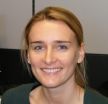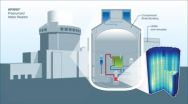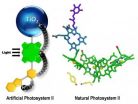(Press-News.org) RIVERSIDE, Calif. (http://www.ucr.edu) — A University of California, Riverside assistant professor of engineering is among a group of researchers that have made important discoveries regarding the behavior of a synthetic molecular oscillator, which could serve as a timekeeping device to control artificial cells.
Elisa Franco, an assistant professor of mechanical engineering at UC Riverside's Bourns College of Engineering, and the other researchers developed methods to screen thousands of copies of this oscillator using small droplets. They found, surprisingly, that the oscillators inside these small droplets behave in a very diverse way in terms of period, amplitude and phase.
"This diversity will play an important role in engineering complex behaviors in artificial cells, and we will take advantage of it," Franco said.
The paper, "Diversity in the dynamical behavior of a compartmentalized programmable biochemical oscillator," was published online this week in the journal Nature Chemistry. Co-authors were: Maximilian Weitz, Korbinian Kapsner and Friedrich C. Simmel, all of the Technische Universität München in Germany and Jongmin Kim and Erik Winfree, both of the California Institute of Technology.
Electronic oscillators are circuits that produce a periodic electronic signal, and they are used to regulate a variety of devices from radio and television transmitters to cellphones and computers. Biological systems are also regulated by complex molecular oscillators, from the level of individual cells up to entire organisms.
For decades, scientists have been trying to figure out ways to make artificial, programmable oscillators with molecules. Artificial oscillators may help adjust timekeeping in cells and regulating artificial cells. They could also be used as components in molecular computers that could create a middle ground between computers and nature.
Franco and the other researchers worked with a minimalistic artificial clock made with a soup-like mixture of DNA, RNA and proteins. An oil mixture was added to the oscillator mixture, and shaken to create an emulsion with thousands of water-in-oil droplets. Each droplet contained a copy of the oscillator mixture. Franco compared this simple emulsion preparation procedure to creating a salad dressing with oil and vinegar.
While emulsions are a common laboratory technique used to generate many small samples and run thousands of experiments in parallel, not many studies have looked at dynamic circuits like oscillators.
In the experiments outlined in the Nature Chemistry paper, the "blinking" droplets containing the oscillator were studied under a microscope, where the diverse behavior of amplitude and frequency was observed.
Through mathematical modeling, the researchers were able to attribute this diversity to uneven distribution of molecules inside each droplet, a phenomenon called "partitioning noise." This variability is a major challenge as well as an opportunity for the development of artificial cells. Similar experiments will allow scientists to optimize artificial molecular devices so they are minimally affected by partitioning noise.
INFORMATION:
Funding for Franco's research comes from the National Science Foundation, Bourns College of Engineering at UC Riverside and the UC Regents Faculty Development Fellowship.
Artificial cells and salad dressing
Researchers have made important discoveries regarding the behavior of a synthetic molecular oscillator, which could help create artificial cells
2014-02-18
ELSE PRESS RELEASES FROM THIS DATE:
CASL, Westinghouse simulate neutron behavior in AP1000 reactor core
2014-02-18
OAK RIDGE, Tenn., Feb. 18, 2014 — Scientists and engineers developing more accurate approaches to analyzing nuclear power reactors have successfully tested a new suite of computer codes that closely model "neutronics" — the behavior of neutrons in a reactor core.
Technical staff at Westinghouse Electric Company, LLC, supported by the research team at the Consortium for Advanced Simulation of Light Water Reactors (CASL), used the Virtual Environment for Reactor Applications core simulator (VERA-CS) to analyze its AP1000 advanced pressurized water reactor (PWR). The testing ...
SDSC/UC San Diego researchers hone in on Alzheimer's disease
2014-02-18
Researchers studying peptides using the Gordon supercomputer at the San Diego Supercomputer Center (SDSC) at the University of California, San Diego (UCSD) have found new ways to elucidate the creation of the toxic oligomers associated with Alzheimer's disease.
Igor Tsigelny, a research scientist with SDSC, the UCSD Moores Cancer Center, and the Department of Neurosciences, focused on the small peptide called amyloid-beta, which pairs up with itself to form dimers and oligomers.
The scientists surveyed all the possible ways to look at the dynamics of conformational ...
Artificial leaf jumps developmental hurdle
2014-02-18
In a recent early online edition of Nature Chemistry, ASU scientists, along with colleagues at Argonne National Laboratory, have reported advances toward perfecting a functional artificial leaf.
Designing an artificial leaf that uses solar energy to convert water cheaply and efficiently into hydrogen and oxygen is one of the goals of BISfuel – the Energy Frontier Research Center, funded by the Department of Energy, in the Department of Chemistry and Biochemistry at Arizona State University.
Hydrogen is an important fuel in itself and serves as an indispensible ...
Wistar scientists develop gene test to accurately classify brain tumors
2014-02-18
cientists at The Wistar Institute have developed a mathematical method for classifying forms of glioblastoma, an aggressive and deadly type of brain cancer, through variations in the way these tumor cells "read" genes. Their system was capable of predicting the subclasses of glioblastoma tumors with 92 percent accuracy. With further testing, this system could enable physicians to accurately predict which forms of therapy would benefit their patients the most.
Their research was performed in collaboration with Donald M. O'Rourke, M.D., a neurosurgeon at the University ...
COXEN model picks the best drug for ovarian cancer
2014-02-18
There are three common drugs for advanced ovarian cancer: paclitaxel, cyclophosphamide, and topotecan. Like a shell game, if you pick the right drug a patient is likely to respond. And, unfortunately, picking the wrong drug can lead to treatment failure. As reported in this month's issue of the journal PLoS ONE, a University of Colorado Cancer Center and University of Virginia study used a sophisticated model of ovarian cancer genetics to match the right tumor with the right drug. Patients who were matched in this way lived an average 21 months longer than patients who ...
A battery small enough to be injected, energetic enough to track salmon
2014-02-18
RICHLAND, Wash. – Scientists have created a microbattery that packs twice the energy compared to current microbatteries used to monitor the movements of salmon through rivers in the Pacific Northwest and around the world.
The battery, a cylinder just slightly larger than a long grain of rice, is certainly not the world's smallest battery, as engineers have created batteries far tinier than the width of a human hair. But those smaller batteries don't hold enough energy to power acoustic fish tags. The new battery is small enough to be injected into an organism and holds ...
Controlling magnetism with an electric field
2014-02-18
Coral Gables, Fla. (Feb. 17, 2014) -- There is a big effort in industry to produce electrical devices with more and faster memory and logic. Magnetic memory elements, such as in a hard drive, and in the future in what is called MRAM (magnetic random access memory), use electrical currents to encode information. However, the heat which is generated is a significant problem, since it limits the density of devices and hence the performance of computer chips.
Scientists are now proposing a novel approach to achieve greater memory density while producing less heat: by using ...
University of Illinois study of 2011 flood will lead to better preparedness
2014-02-18
In May 2011, when the U.S. Army Corps of Engineers used explosives to breach a levee south of Cairo, Ill., diverting the rising waters of the Mississippi and Ohio rivers to prevent flooding in the town, about 130,000 acres of Missouri farmland were inundated. It was the largest flood of the lower Mississippi ever recorded, and researchers from the University of Illinois at Urbana-Champaign took advantage of this "once-in-a-scientific-lifetime" occurrence to study the damage, funded by a National Science Foundation Rapid Response Grant. Their results, published this week ...
Embarking on geoengineering, then stopping, would speed up global warming
2014-02-18
Spraying reflective particles into the atmosphere to reflect sunlight and then stopping it could exacerbate the problem of climate change, according to new research by atmospheric scientists at the University of Washington.
Carrying out geoengineering for several decades and then stopping would cause warming at a rate that will greatly exceed that expected due to global warming, according to a study published Feb. 18 in Environmental Research Letters.
"The absolute temperature ends up being roughly the same as what it would have been, but the rate of change is so drastic, ...
In fight against teen prescription drug abuse, one-two punch wins
2014-02-18
DURHAM, N.C. -- Programs that aim to curb teen prescription drug abuse have vastly differing effectiveness, ranging from big drops in drug abuse to no measurable effect, according to a new study of 11,000 teenagers by researchers at Duke and Pennsylvania State universities.
The best results came from pairing a school-based program with a home-based intervention, resulting in a 10 percent decrease in abuse rates. By contrast, most school-based programs were ineffective when used by themselves, with just one exception.
The six-year study is among the first to measure ...
LAST 30 PRESS RELEASES:
Longest observation of an active solar region
Why nail-biting, procrastination and other self-sabotaging behaviors are rooted in survival instincts
Regional variations in mechanical properties of porcine leptomeninges
Artificial empathy in therapy and healthcare: advancements in interpersonal interaction technologies
Why some brains switch gears more efficiently than others
UVA’s Jundong Li wins ICDM’S 2025 Tao Li Award for data mining, machine learning
UVA’s low-power, high-performance computer power player Mircea Stan earns National Academy of Inventors fellowship
Not playing by the rules: USU researcher explores filamentous algae dynamics in rivers
Do our body clocks influence our risk of dementia?
Anthropologists offer new evidence of bipedalism in long-debated fossil discovery
Safer receipt paper from wood
Dosage-sensitive genes suggest no whole-genome duplications in ancestral angiosperm
First ancient human herpesvirus genomes document their deep history with humans
Why Some Bacteria Survive Antibiotics and How to Stop Them - New study reveals that bacteria can survive antibiotic treatment through two fundamentally different “shutdown modes”
UCLA study links scar healing to dangerous placenta condition
CHANGE-seq-BE finds off-target changes in the genome from base editors
The Journal of Nuclear Medicine Ahead-of-Print Tip Sheet: January 2, 2026
Delayed or absent first dose of measles, mumps, and rubella vaccination
Trends in US preterm birth rates by household income and race and ethnicity
Study identifies potential biomarker linked to progression and brain inflammation in multiple sclerosis
Many mothers in Norway do not show up for postnatal check-ups
Researchers want to find out why quick clay is so unstable
Superradiant spins show teamwork at the quantum scale
Cleveland Clinic Research links tumor bacteria to immunotherapy resistance in head and neck cancer
First Editorial of 2026: Resisting AI slop
Joint ground- and space-based observations reveal Saturn-mass rogue planet
Inheritable genetic variant offers protection against blood cancer risk and progression
Pigs settled Pacific islands alongside early human voyagers
A Coral reef’s daily pulse reshapes microbes in surrounding waters
EAST Tokamak experiments exceed plasma density limit, offering new approach to fusion ignition
[Press-News.org] Artificial cells and salad dressingResearchers have made important discoveries regarding the behavior of a synthetic molecular oscillator, which could help create artificial cells






